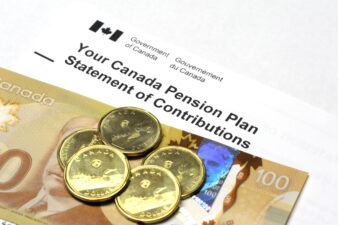After years of opposition and uncertainty, Canada appears poised to break ground on two major oil-export pipelines in the very near future. In addition, another long-delayed pipeline project could eventually break ground after TransCanada Corporation (TSX:TRP)(NYSE:TRP) recently submitted a Presidential Permit application for approval of its highly controversial Keystone XL pipeline.
That possible project restart comes on top of the company’s continued efforts to construct the Energy East pipeline in Canada. What’s worth noting about these projects is that they could result in Canada building more pipeline capacity than it needs, especially given that oil producers are sanctioning far fewer projects these days due to lower oil prices.
From a shortfall to a glut
Canada currently has enough pipeline takeaway capacity to move more than four million barrels of oil per day. That leaves it with adequate capacity given that the country produces slightly less than four million barrels per day. However, oil sands output will expand sharply over the next few years, reaching roughly 4.5 million barrels per day by 2019 as several major oil sands expansion projects come online.
These developments include Suncor Energy Inc.’s Fort Hills project and additional phases of Canadian Natural Resources Limited‘s Horizon facility, which will combine to add more than 300,000 barrels per day of output by 2019.
As these and other projects ramp up, the output will quickly outstrip the country’s pipeline capacity, which is expected to cause a widening shortfall until 2019 when Kinder Morgan Inc. (NYSE:KMI) and Enbridge Inc. (TSX:ENB)(NYSE:ENB) expect to complete their recently approved expansion projects.
In Kinder Morgan’s case, its Trans Mountain Pipeline expansion will boost that pipeline’s capacity from 300,000 barrels per day up to 890,000 barrels per day. Meanwhile, Enbridge’s Line 3 Replacement will restore the line to its original capacity of 760,000 barrels per day — up from its current capacity of 390,000 barrels per day.
Once complete, these projects should push Canada’s oil sands takeaway capacity to more than five million barrels per day. Under current projections, the country’s oil output is not expected to exceed that capacity until sometime in the latter half of next decade.
Trying to cut back in line
TransCanada had hoped to capture some of Canada’s growing demand for pipeline capacity by proposing to build the Keystone XL pipeline, which would move Canadian oil to the U.S. Gulf Coast. However, that project faced intense opposition from environmentalists, which eventually led the company to propose the larger Energy East pipeline across Canada.
That decision to focus on another project that didn’t require U.S. approval seemed like a prudent move, especially after former U.S. President Obama officially rejected the proposed 830,000 barrel per day Keystone XL pipeline in 2015.
However, the Trump Administration recently invited TransCanada to reapply for a permit to build the Keystone XL pipeline, which it quickly did. As a result, the company could conceivably construct both Keystone XL and Energy East, which would boost Canada’s oil sands takeaway capacity to more than six million barrels per day by early next decade.
The problem with that scenario is that production from the oil sands is not expected to be much more than 4.5 million barrels per day by the time those projects could go into service. For perspective, that is just enough oil to fill existing capacity plus Kinder Morgan’s Trans Mountain pipeline without needing even to use the capacity of Enbridge’s Line 3 expansion.
In fact, even if Canada’s oil producers accelerate the country’s production later next decade, the country would still only need less than half of TransCanada’s proposed pipeline capacity.
This projection suggests that the company does not need to build both projects anytime soon. As such, it is possible that TransCanada will hold off on its equally controversial Energy East project and instead focus on taking advantage of the opportunity to build Keystone XL before that door shuts again. It could then attempt to move forward with Energy East once producers begin work on a new slate of oil sands growth projects.
Investor takeaway
While Canada clearly needs more oil pipeline capacity, it does not yet need all the projects currently under consideration. That likely means TransCanada will need to shelve one of its projects with Energy East the likely candidate because the company appears to have an easier path to building the Keystone XL at the moment.







